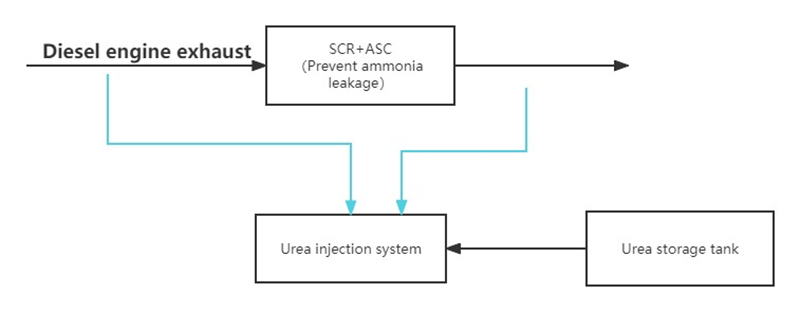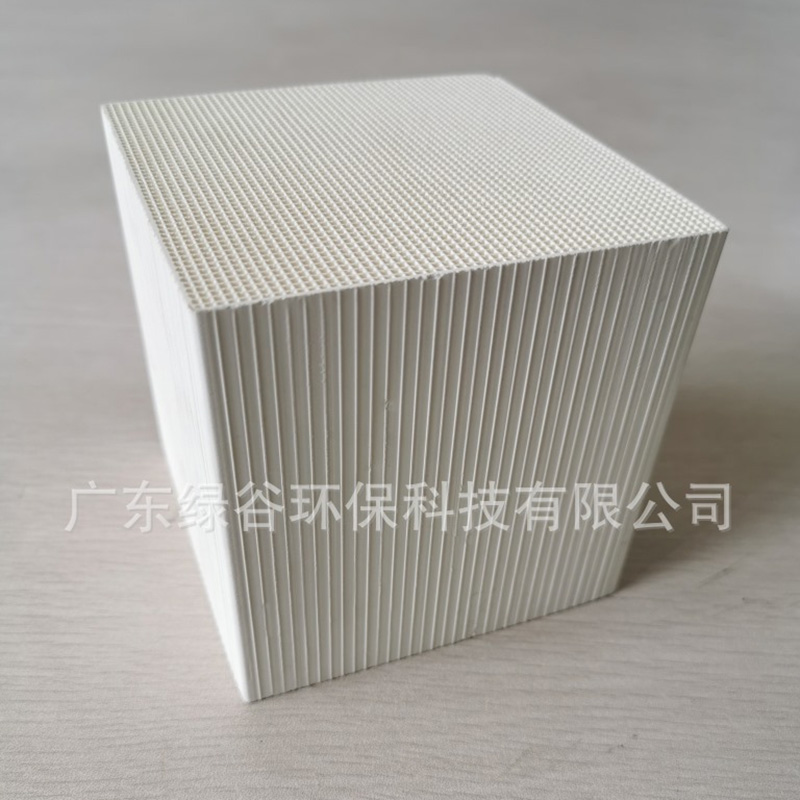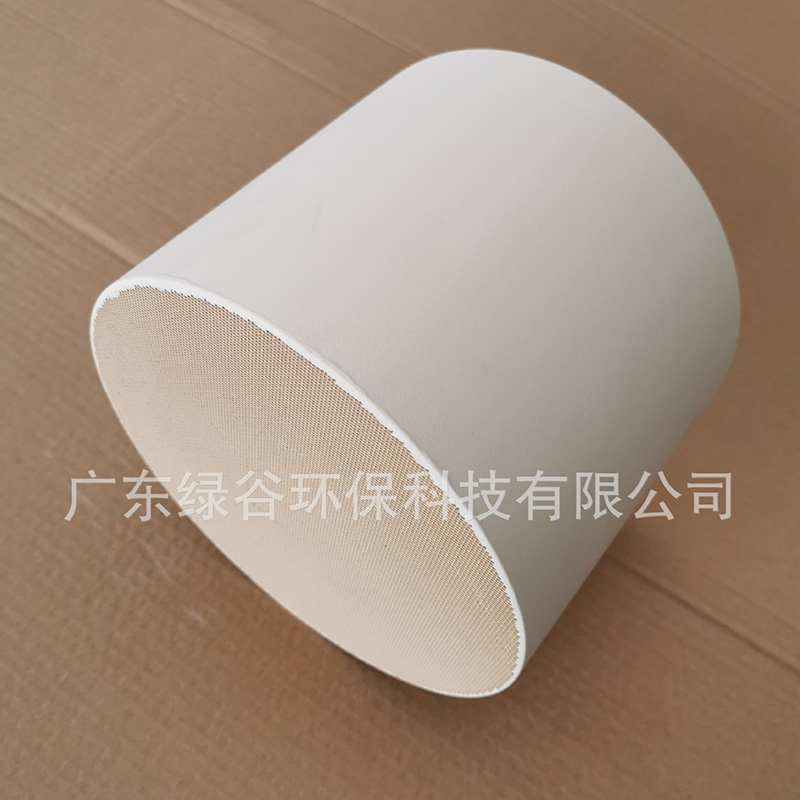In the field of flue gas denitration, Guangdong GRVNES Environmental Protection Technology Co., Ltd. has designed 3 + 1 layers and added a layer of ammonia escape catalyst to solve the phenomenon of ammonia escape when some ammonia is over sprayed, so that the over sprayed ammonia can be discharged into the air after reaction after operation.
Treatment of denitration ammonia escape from GRVNES flue gas simultaneous treatment of denitration ammonia escape with ASC ammonia escape catalyst
Technology Roadmap
According to the requirements of the project and the actual emission situation, Green Valley environmental protection has determined the technical route of "SCR + ASC" to meet the requirements of the project. The technical route of the project is shown in the figure below:

SCR+ASC
SCR + ASC Technology Roadmap
The cost of adding nitrogen compounds (NOx) to the engine regularly can be reduced by more than 90% through the catalytic reduction technology, and the effective cost of nitrogen compounds (NOx) can be reduced by more than 5% through the catalytic reduction technology. And the back pressure is low, and there is almost no increase in back pressure in the process of use.
Working Principle Diagram of SCR Catalys

Working Principle Diagram of SCR Catalys


Working Principle of ASC Ammonia Escape Catalyst:
ASC oxidation catalyst is mainly composed of carrier and catalytic coating. It is a diesel engine exhaust purification device. The main purpose of the device is to oxidize the excess NH3 in the diesel exhaust system with O2 to form pollution-free N2 and water out of the engine, so as to realize the clean emission of diesel exhaust. It can be used in combination with diesel particle catcher and denitration purification catalyst.
Ignition Temperature
That is, the temperature at which the catalyst reaches 50% conversion efficiency. The ignition temperature of ASC ammonia escape catalyst is 250 ℃. To achieve higher conversion, the exhaust temperature of the engine needs to be higher.
Packaging Form
It can be coated separately or overlapped with SCR, which can meet the requirements of service efficiency.
Emission Standard:
Ammonia escape rate ≤ 3ppm
NOx emission reduction vs ammonia pollution in cement industry
Because the research on the firing system of cement kiln is still in a relatively extensive state, there are still many deficiencies in the working conditions in the kiln and the formation mechanism of nitrogen oxides in the domestic cement industry. There are many sources of nitrogen oxides and many influencing factors. In the field of nitrogen oxide emission reduction technology, the existing main technologies include SCR, SNCR, staged combustion and so on.
SCR selective catalytic reduction technology is the main denitration technology in the world. With ammonia or urea as denitration agent and catalytic selective absorption under the action of catalyst in the absorption tower, the denitration rate can reach more than 90%.
SNCR technology uses the appropriate temperature space (900 ℃ ~ 1100 ℃) in the decomposition furnace to inject ammonia mixture into it. At this temperature, ammonia (NH3) reacts with NOx in flue gas to produce N2 and H2O. The denitration rate is generally 40% - 60%, the consumption of ammonia is huge, and the escape rate of NH3 is high, which can be more than 3 times that of SCR.
At present, domestic cement enterprises have basically completed the construction of SNCR denitration. This technology uses a large amount of ammonia as NOx reducing agent. Ammonia is easy to leak in the process of production, transportation, storage and use, resulting in serious pollution to the atmospheric environment.
Therefore, the current cement industry is actually facing a relatively contradictory problem. The use of ammonia denitration can reduce nitrogen oxide emissions, but the problem of "ammonia escape" is difficult to solve. Moreover, the production of ammonia itself is a process of high energy consumption and high pollution, and transportation, storage and use will also cause "ammonia escape".
Based on such problems, cement enterprises should strengthen the management of ammonia transportation and storage, improve the utilization efficiency of ammonia and reduce "ammonia escape".
Where Will Ammonia Escape From?
Under the current environmental protection situation, reducing pollutant emission of cement enterprises is an inevitable requirement of the external environment; At the same time, with the iteration of cement industry technology, lower energy consumption and emission standards are also the inevitable trend of industry upgrading.
For cement enterprises, from an economic perspective, the transformation cost of SCR technology alone is expected to be more than 30 million. In addition, the cost of catalyst is much higher than that of "SNCR + source treatment". Secondly, on the basis of low nitrogen combustion and staged combustion, combined with SNCR, some enterprises can also meet the current NOx emission standards under stable kiln conditions.
Based on the above reasons, at present, many domestic cement enterprises choose the way of "SNCR + source treatment" to meet the requirements of reducing ammonia oxide emission, but the resulting disadvantage is that the problem of ammonia escape may be aggravated.




Post time: May-07-2022
